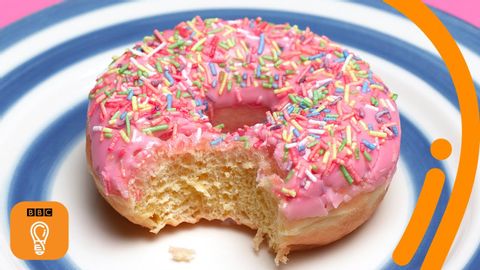為什麼甜食如此難以抗拒?來了解背後的科學原理 | BBC創意 (The science behind why doughnuts are so hard to resist | BBC Ideas)
Summer 發佈於 2021 年 10 月 07 日  沒有此條件下的單字
沒有此條件下的單字US /səˈsɛptəbəl/
・
UK /səˈseptəbl/
- adj.易感;易受影響的;易得病的;易受影響的;脆弱的
US /'ɡroʊsərɪ/
・
UK /'ɡrəʊsərɪ/
- v.t.詭計:騙局:花招;惡作劇;戲弄
- n. (c./u.)戲法;竅門;訣竅;把戲;特技
- adj.虛弱的;欺詐的
US /ɪkˈspɪriəns/
・
UK /ɪk'spɪərɪəns/
- n. (c.)經驗;(學到東西的)經驗;經驗;經歷
- n. (c./u.)經驗;經歷;工作經驗
- v.t./i.經歷;體驗
